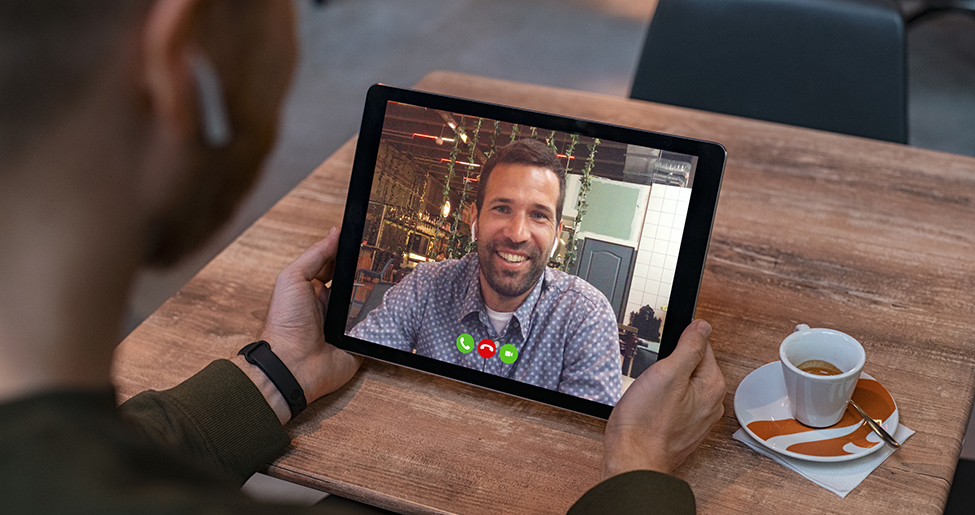Article menu
Over the past few months, we’ve seen drastic changes to the way we work—changes we may have never thought were possible. We learned to operate remotely and band together in a time of crisis, keeping things moving despite the economy literally crumbling around us. It’s been an amazing feat, especially in a sector like not-for-profit that has often been criticized for falling behind when it comes to digital prowess.
But shifting our lives—and our mindsets—wasn’t without consequence. As a result, many of us have been left feeling isolated and disconnected. The normal social interactions we’ve come to expect have been paused, leaving only work and an impending sense of uncertainty.
Needless to say, it hasn’t been great for our mental health.
So how can you, as an organisation, support the mental health of the amazing employees that have persevered and continued serving their community in a time of crisis?

The law says you can’t ignore mental health
And why would you? With so much of what we do as a sector supporting the vulnerable in our community, why would we then ignore the wellbeing of our own staff?
Remember, poor mental health is a disability and is covered under the Equality Act. Once you as an employer are aware that an employee is being hindered from doing their job because of their mental health, you have a legal duty to consider reasonable adjustments. And these adjustments should be made to accommodate all staff, whether or not they have a formal diagnosis.
It’s about helping your employees cope and adjust where possible. Not sure where to start? Here are a few ways you can support your team’s mental health during a crisis.
1. Create a culture that supports openness
Talking about mental health isn’t easy. Now add to that the fear that poor mental health might impact someone’s job and it’s no wonder that we’re so accustomed to bottling it all up. But that should never be the case. Your staff shouldn’t be afraid to come to you when they’re feeling down or overwhelmed. They should feel safe discussing these sorts of things, and that all starts with creating a culture that encourages open discussion.
You need to make it clear that your charity supports mental health and does not discriminate because of it. The best way to do this? Have a straightforward mental health strategy in place. This is something you can discuss at team meetings, in 1-to-1s and even include in your employee handbook.
If you’re not sure what to include, you can use the template provided by Mental Health at Work.

2. Encourage clear boundaries between work and home life
It’s easy to blur the lines between work and home when you’re spending the whole day inside your house. And even if you’re still out in the field supporting the community, the usual 9-to-5 work schedule can become hazy and run over. That’s why it’s more important than ever to encourage employees to establish clear boundaries between their work and their personal lives.
Make sure your staff are taking lunch breaks and not answering emails after working hours (unless they absolutely have to). Invite your team to take breaks wherever they can, even if it’s just for a coffee or a short walk outside. The less tied to their desk they feel, the easier it will be on their state of mind.
The best advice here is to lead by example. If you’re answering emails at 8 PM and working twice as many hours as before, that sets a precedent for your employees.
3. Create Wellness Action Plans for your team
Maybe you’re the sort of leader that likes to have an easy-to-follow plan in place. Have you ever considered building a Wellness Action Plan (WAP) tailored to your team or your individual employees?
Mind has a great resource for this. All you have to do is download their Wellness Action Plan guide and have each member of your team fill out their own WAP. Then, schedule some time to go through it together. That way, you have a clearer understanding of what sort of things impact your employees and how to spot the signs early on if someone is struggling.
After that, it’s just a case of catching up regularly to discuss how they’re current workload is affecting them and what you, as a manager, can do to support them.

4. Implement regular check-ins
With so many of us working remotely, it’s more important than ever before to conduct regular catch-ups with your team. In a normal working environment, employees have more opportunities to simply pull you aside and tell you if something is bothering them. But with all of us operating from different locations, there’s less of an open atmosphere.
By scheduling regular catch-ups and 1-to-1s with your staff, you can make sure no one is being hindered by their new working routine. This is especially important for employees with an influx of responsibilities as a result of social distancing (i.e. home-schooling, caring for a relative, etc).
And virtual meetings are a great space to be more social—most of us aren’t seeing as many people so it’s nice to catch up with colleagues! Of course, this is a time to collaborate and discuss projects, but try not to make it too performance-focused. You want this to help you support them, not seem like a way to micromanage.
5. Make use of all the tools at your disposal
Do you already have tools and processes in place for supporting mental health? Then make sure your team makes use of them. Whether you offer counselling, wellness training, yoga sessions or run social events, encourage your staff to get involved.
If you don’t have these things in place, this might be a good time to consider what sort of wellness activities you can offer your team. Maybe you can run daily meditation sessions over skype. Or maybe you’d prefer to organise an internal fitness challenge. You might even consider investing in workplace wellness programmes or apps like Headspace.
The more you offer your employees, the more they’ll realise they’re not alone in this. And that will hopefully alleviate some of the pressures they’re putting on themselves to deliver above and beyond during these difficult times.

Consider applying the following workplace adjustments
If you know that a member of your team is dealing with poor mental health as a result of the current economic and social climate, you could consider the following practical and cost-effective adjustments to their role.
- Offer flexible start/finish times—this is especially important if they have children or care responsibilities
- Institute mental health days—relax the absence rules to include mental health-related sickness absence
- Allow time off for counselling—employees may need to arrange meetings with therapists and counsellors
- Debrief with staff after emotionally tolling tasks—this should just be a 1-to-1 between a manager and their employee
- Encourage resilience-building exercises—things like exercise, meditation and healthy eating are great ways to support mental health
Ultimately, it all comes down to clear communication. We often forget to check in on our teams when things get busy, but we don’t want to burn out, so do what you can to make this part of your daily (or weekly) agenda. The more open you are about mental health, the less reluctant your staff will be to let you know when they’re struggling.
For more information on best practice around mental health in the workplace, check out the Mind website.





